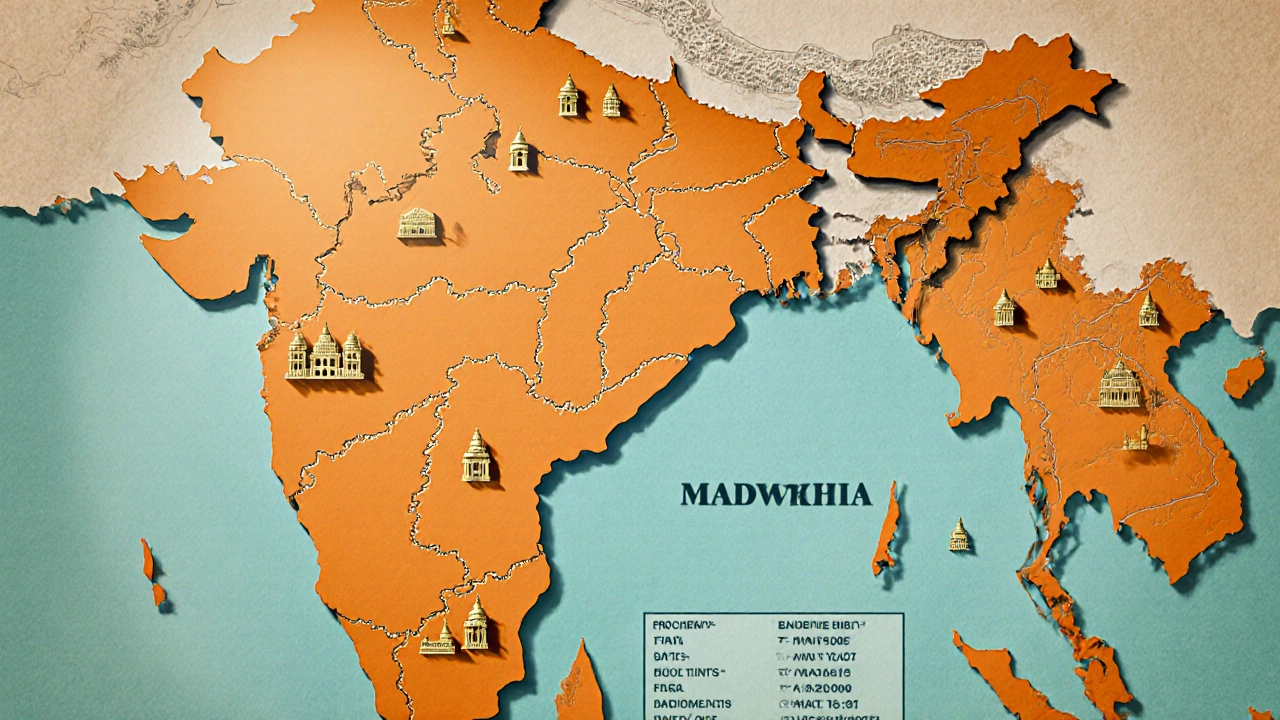
Madhya Pradesh leads India with over 1,500 protected heritage sites, outpacing Uttar Pradesh and Rajasthan. Discover counts, top monuments, travel routes and preservation tips.
When exploring heritage sites count, the total number of officially recognized cultural and historic locations in a country, you’re really looking at a figure that ties together several key pillars of Indian history.
The backbone of India’s UNESCO World Heritage Sites, sites flagged by UNESCO for outstanding universal value forms a large chunk of the tally, while countless ancient temples, religious structures dating back millennia and historic cities, urban centers continuously inhabited for centuries add depth. Together they drive heritage tourism, travel focused on cultural and historical experiences, which in turn pushes governments to protect and catalog more sites.
The heritage sites count isn’t just a number on a spreadsheet; it shapes itineraries, informs budget choices, and helps you prioritize what to see. For example, India currently lists 40 UNESCO World Heritage Sites, ranging from the marble wonder of the Taj Mahal to the mountain forts of Rajasthan. Each of those sites contributes a single point to the national tally, but they also attract millions of visitors each year, creating a ripple effect for nearby ancient temples and historic towns.
Ancient temples like the Sun Temple at Konârak or the Brihadeeswarar Temple in Thanjavur are counted separately from UNESCO listings, yet they often appear in travel guides because of their architectural brilliance and spiritual significance. These temples increase the heritage sites count and give heritage tourism a richer menu of destinations.
Historic cities such as Varanasi and Ujjain are cited in the “oldest cities” posts, and they each add to the overall count of heritage locations. Their continuous habitation over thousands of years makes them living museums, and they often host festivals that draw tourists looking for authentic cultural experiences.
State‑wise breakdowns reveal interesting patterns: Gujarat, Karnataka, and Tamil Nadu each host more than ten heritage sites, while smaller states may have only a handful. This variation influences regional travel trends; travelers who love wildlife sanctuaries might head to Karnataka for both natural and cultural heritage, as highlighted in the wildlife sanctuary posts.
From a practical standpoint, knowing the heritage sites count helps you plan realistic travel timelines. A high concentration of sites in a single state, like Rajasthan’s forts and palaces, means you can cluster visits and save on transport. Conversely, when sites are spread across the country, a rail itinerary—like the senior‑friendly train travel guide—becomes a smart way to link distant heritage points.
Finally, the count is dynamic. New entries are added each year after rigorous evaluation, and some sites are upgraded from national to UNESCO status. Keeping an eye on the latest numbers ensures you won’t miss a newly recognized gem on your next trip.
Below you’ll find a curated collection of articles that dive deeper into each of these topics— from the oldest temples and cities to practical travel tips for exploring India’s rich heritage landscape.

Madhya Pradesh leads India with over 1,500 protected heritage sites, outpacing Uttar Pradesh and Rajasthan. Discover counts, top monuments, travel routes and preservation tips.